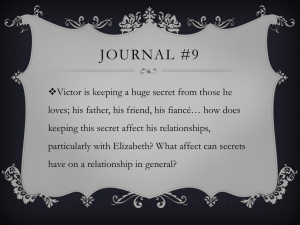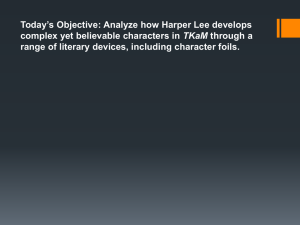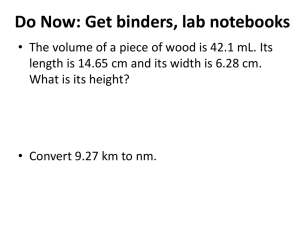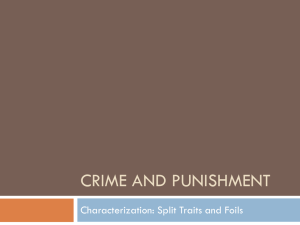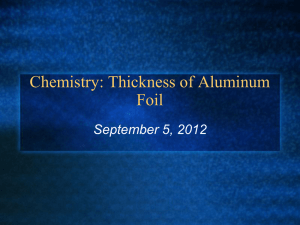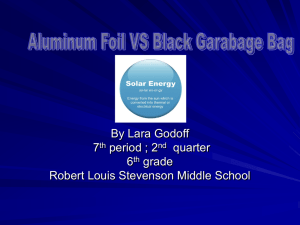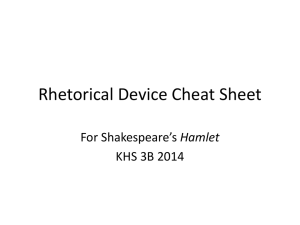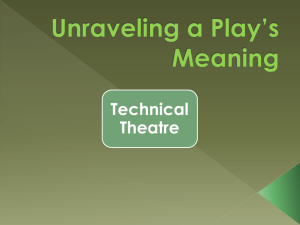Foil Windings in Power Inductors: Methods of Reducing AC
advertisement
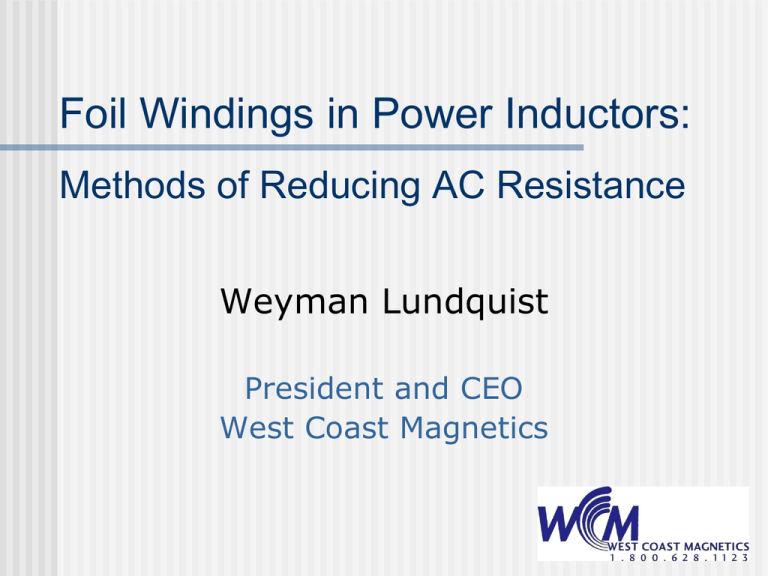
Foil Windings in Power Inductors: Methods of Reducing AC Resistance Weyman Lundquist President and CEO West Coast Magnetics SMPS Inductor Winding Resistance Includes AC and DC Resistance Every successful design requires minimization of total AC plus DC winding losses. Comparison of DC Resistance: Foil, Solid Wire & Litz Wire FOIL DCR = 1.9mΩ SOLID WIRE DCR = 4.3 mΩ 50/40 awg LITZ WIRE DCR = 22.9mΩ Foil windings: Fast and easy to wind Do not require bobbins or other supports Components of Winding Losses Resistive loss Ptotal I Rdc I 2 dc 2 ac ,rms Eddy-current loss Rdc Pskin Pproximity dc loss Pdc I dc2 Rdc ac loss Pac I ac2 ,rms Rac “ac resistance” Rac Source: J. Pollock Thayer School of Engineering at Dartmouth Pac I ac2 ,rms Skin Effect B-Field x J Current Density Induced Current Main Current Skin Effect An isolated conductor carrying highfrequency current which generates a field in itself that forces the current to flow near the surface of the conductor. Proximity Effect B-Field oo ooo ooo ooo oo xx xxx xxx xxx xx J Current Density x Induced Current Main Current Proximity Effect An isolated conductor is placed in an uniform external field External field results from other wires and windings near the conductor but mainly from the field present in the core window. Magnetic Field Inside Core Window Ungapped E-core Gapped E-core Magnetic Field Inside Gapped Inductor Core Window Legend: Red: strong field Blue: weak field Lines: constant field magnitude Gapped E-core Current Distribution: Ungapped E-Core and Gapped E-Core Full Foil: Ungapped Core AC current evenly distributed on surface of foil across full width of foil. Shaped Foil: Gapped Core AC current pulled to small copper cross section in the vicinity of the gap. Shaped Foil is a patented technology developed by Professor Charles Sullivan and Dr. Jennifer Pollock at Dartmouth College. Patented Inductor Technology Very Low DCR, High Window Utilization Low AC Resistance Foil winding AC loss reduction comparable to litz wire SIGNIFICANTLY LOWER TOTAL WINDING LOSSES Shaped Foil is a patented technology developed by Professor Charles Sullivan and Jennifer Pollock at Dartmouth College. Experiment: Is the New Technology Really Better? Objective: A conclusive comparison of the new technology to conventional windings Step 1: Define the Inductor Inductance: 90 uH Current: 40 Adc Ripple: Triangle wave at 50 kHz Core: E70/33/32 Epcos N67 material Gap: 2.64 mm (1.32 mm each center leg) Turns: 15 Experiment: Is the New Technology Really Better? Step 2: Wind inductors with conventional windings using best practices Full window Single layer Step 3: Determine winding losses for each inductor as a function of ripple magnitude Winding Cross Sections Long Cut Full Foil 20/32 Litz 20/32 Litz Solid Wire Solid Wire Prototype Cut 400/40 Litz 50/40 Litz Method of Estimating Losses DC Resistance Core Losses Measure voltage drop under 5 Amp DC load Derived from Epcos loss curves AC resistance Sweep from 10 kHz to 200 kHz with Agilent 4294A network analyzer Use Fourier decomposition to translate sinusoidal sweep data to triangular waveform Total Loss Comparison: 50 kHz Solid Wire 40 awg litz Full Foil 32 awg litz Shaped Foil Tech. Shaped Foil Tech. Total Loss Comparison: 200 kHz Full Foil Solid Wire 40awg litz Shaped Shaped Shaped Shaped Shaped Foil Foil Foil Foil Foil Tech. Tech. Tech. Tech. Tech. Experimental Verification Source: J. Pollock Thayer School of Engineering at Dartmouth 1.4 Inductance = 97 μH Number of turns, N = 15 Core size: E71/33/32 Ripple ratio = 20% 1.2 Full-width Foil Rac, Ω 1 0.8 Prototype Notched Foil #3 Prototype Notched Foil #2 Prototype Notched Foil #1 0.6 0.4 Optimization Program Loss 0.2 0 FEA of Notched Foil 0 50 100 150 200 250 Temperature Rise Measurement: Results at 15% Ripple Additional Development Work Completed: Optimization of Foil Shape (cutout) for minimum loss. Simulation program to predict copper losses in foil windings for full foil and shaped foil windings. Simulation program to plot inductance vs. Idc for gapped cores. Optimization of foil shape in distributed gap (powdered cores). Foil Shape Optimization in Distributed Gap, Powdered Cores Source: Jennifer Pollock. Optimizing Winding Designs for High Frequency Magnetic Components. PHD thesis, 2008 Thank you for your time Weyman Lundquist, President West Coast Magnetics 4848 Frontier Way, Ste 100 Stockton, CA 95215 www.wcmagnetics.com 800-628-1123 The author gratefully acknowledges Professor Charles Sullivan, Thayer School of Engineering at Dartmouth and Jennifer Pollock, PHD EE for their work and contributions to this presentation.
